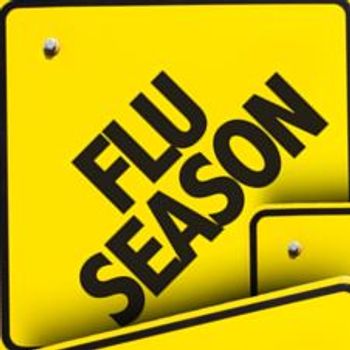
Drug Benefit Trends
- Drug Benefit Trends Vol 21 No 12
- Volume 21
- Issue 12
Part D in 2010: Fewer Plans, but Still Lots of Choice
While the facts support the claim from the Centers for Medicare & Medicaid Services (CMS) that beneficiaries have “robust” choices in the sign-up period for 2010 Part D drug coverage plans that begins in November, the number of options available have continued to decline. At the peak in 2007, 1875 stand-alone Medicare drug plans were offered; this year, the number had shrunk to 1659, and the total for next year will be 1510.
While the facts support the claim from the Centers for Medicare & Medicaid Services (CMS) that beneficiaries have “robust” choices in the sign-up period for 2010 Part D drug coverage plans that begins in November, the number of options available have continued to decline. At the peak in 2007, 1875 stand-alone Medicare drug plans were offered; this year, the number had shrunk to 1659, and the total for next year will be 1510.
The reduction in choices is evident in regions that have a large number of plans (Pennsylvania/West Virginia region has 57 plans now and 53 in 2010) and those that have relatively few offerings (Alaska, where the number is dropping from 45 to 39). Nonetheless, the CMS calculated that only 1.5% of those enrolled in Part D plans will have to change next year because their present insurer is dropping their plan.
Most of the exits from the Part D market are private fee-for-service plans, but the number also includes those that the CMS encouraged to drop out, either because they were so small (with fewer than 100 enrollees) or because their similarities to other plans from the same insurer “made it hard for beneficiaries to distinguish differences between the plan offerings.” Even with the reduced number of offerings, “in 2010, choices will be easier and plan benefits more equitable,” said Rep Henry Waxman, chairman of the House committee overseeing the program.
An analysis by the Kaiser Family Foundation of 2010 Part D offerings shows that the weighted average premium will be up 11%, to $38.85, and that about 1.2 million beneficiaries face an increase of at least $10 a month, unless they opt for a less costly plan. The 2010 average is lowest in New Mexico ($26.18) and highest in the Idaho/Utah region ($46.54). Only 20% of the plans will offer coverage in the “donut hole”-down from 25% this year-and, as is currently true, virtually all of them will offer it only for generics.
In addition to the stand-alone plans, the CMS says that 99.9% of Medicare beneficiaries will have a Medicare Advantage plan available, even though the total number-3500 in 2010-will be down almost 20% from this year. That is the same percentage as in 2009. The unweighted average premium for such plans is going up $7, to $39 a month, but more than 85% of beneficia- ries will have access to a plan with no premium.
FDA Looks for Answers to Improving Internet Drug Info
As more patients get information about prescription drugs from the Internet, the FDA has been struggling with how to adopt 20th century rules on advertising to the 21st century. In April, it sent warning letters to 14 drug makers about Internet ads that did not include extensive enough data on the risks involved in the medications being promoted. Now it is taking a more comprehensive approach: the agency has scheduled a public meeting for November 12 and 13 to tap a variety of views on how it should regulate Web information. Firmer new rules will follow.
The FDA has raised 5 basic questions:
• When is a drug maker responsible for online communications? That is, what are the criteria for deciding whether a third-party discussion of a drug is “subject to substantive influences” by the drug maker and, therefore, an appropriate item for FDA oversight?
• How can the requirement to provide balanced information on the benefits and dangers of a drug be applied in an environment when a communication is limited to 140 characters or is a real-time answer to an issue raised on a social networking site?
• Under what circumstances should a drug maker correct faulty information that has appeared on a Web site? Does it make a difference how prominent the site is, who posted the information, or who the intended audience is?
• When is it appropriate to allow links from one site to another?
• What is the duty of drug makers to monitor postings on social network and Internet sites about adverse effects of their products, and when should they alert the FDA to such reports?
Constitutional Challenge to Off-Label Promotion Curbs
Just as the FDA is ramping up its enforcement of the strict limits it puts on promotion of drugs for off-label use, the constitutionality of its regulatory effort is being challenged. Allergan filed a suit in early October in the US District Court in Washington, DC, claiming that its right of free speech allows it to give physicians information about the advisability of trying its anti-wrinkle treatment Botox (onabotulinumtoxinA) for muscle spasms and a wide variety of other conditions, including AIDS.
The company estimates that about 20% of Botox sales are for uses not specifically approved by the FDA. A statement from the company argued that “it is important to proactively provide comprehensive information to physicians about these off-label uses, such as dosing guidelines, patient selection criteria, and proper injection technique.”
The company emphasizes that it is not questioning governmental authority to stop the distribution of false information about a drug or information that does not balance benefit and risk data. However, it is attacking the components of FDA rules that keep a drug maker from handing out information about off-label uses of a drug-even reprints of articles in peer-reviewed journals-unless a physician specifically asks for the material.
The suit comes in the wake of a surge of actions by the FDA against companies for promotions of off-label uses, capped with the record settlement this year in which Pfizer settled such charges with an agreement to pay the federal government $2.3 billion. On the heels of that victory, federal prosecutors won a rare criminal conviction against W. Scott Harkonen, former CEO of InterMune, for sending out a press release suggesting that its lung disease drug Actimmune (interferon gamma-1b) could extend the lives of patients with mild or moderate idiopathic pulmonary fibrosis.
Insurers Launch Test of Single Site for Coverage Data
The Blue Cross and Blue Shield Association and America’s Health Insurance Plans (AHIP) are answering what they say are doctors’ 2 biggest complaints about dealing with them: knowing what treatments are covered by a patient’s policy and the status of an outstanding claim. The solution: a single Web site where a provider can access all the data, regardless of which insurer a patient is using.
Beginning in November, the concept is being tested in Ohio, followed by a launch in New Jersey. Results from those 2 jurisdictions will allow insurers to fine-tune the system and then offer it in the other 48 states, said AHIP President Karen Ignagni. She predicted that savings from a nationwide implementation could add up to “hundreds of billions” of dollars over the next decade. Ohio’s insurance department spearheaded the effort to initiate the trial, enlisting the cooperation of not just the insurers but also the state medical association and local hospitals. In all, 8 insurers-covering 91% of Ohio’s insured-are participating. The site will initially be offered to 30,000 physicians, with hospitals being added later.
In addition to being able to get coverage details and claims updates on the site, doctors will be able to use it for online submission of claims, more rapid referrals of patients to other providers, and faster authorization of services that need an advance okay. “Streamlining the administrative process for providers will result in tremendous savings, both in time and resources, and ultimately lead to improved consumer experience,” claimed Blue Cross and Blue Shield President Scott P. Serota.
In Other Legislative and Regulatory News . . .
$5 billion has been given to the NIH for research awards. The money, part of the federal economic stimulus package, “represents the largest single boost to biomedical research in history,” said President Obama in announcing the program. Twenty percent of the money is headed to applications of the technology produced by the Human Genome Project, including mapping the genomes of at least 20 cancers. Also included in the total are about $750 million designated for treatment of heart, lung, and blood diseases and $100 million set aside for research into diagnosis and interventions for autism spectrum disorders.
Patients receiving heparin should have their dosages reevaluated, the FDA advised. The change is necessitated by new rules requiring testing for a broader range of impurities and modifying the standard reference dose. The result: newly manufactured heparin will be about 10% less potent than that produced before this fall, although given the drug’s long shelf-life, some of the older, stronger formulation is still on providers’ shelves. Most manufacturers are adding an “N” to the product designation to alert practitioners that it is the new formulation.
Medicaid is wasting hundreds of millions of dollars on phony prescriptions for addictive painkillers, according to a study by the Government Accountability Office (GAO). GAO auditors combed through the records in 5 states for 2006 and 2007 and discovered 65,000 instances of the federal/state program paying for drugs obtained illicitly. Often, the prescriptions were written for persons who had died and, in other cases, they were signed by laypersons posing as physicians.
Three states-New York, Washington, and California-have been sued by pharmacy organizations for underpaying on Medicaid prescriptions. Medicaid reimbursement is based on AWPs, a calculation that was readjusted on September 26 to reflect increases in medication costs. However, the National Association of Chain Drug Stores and the National Community Pharmacists Association claim in their suit that the 3 jurisdictions did not make the change. The groups claim that their members will lose as much as $200 million over the next year if the 3 states do not adopt the new AWP figures.
Articles in this issue
Newsletter
Enhance your clinical practice with the Patient Care newsletter, offering the latest evidence-based guidelines, diagnostic insights, and treatment strategies for primary care physicians.



























































































































































































































































































